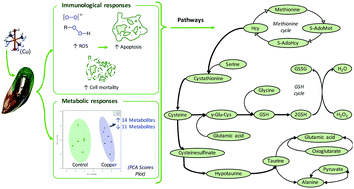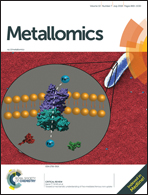Copper-induced immunomodulation in mussel (Perna canaliculus) haemocytes
Abstract
Copper is a common contaminant in aquatic environments, which may cause physiological dysfunction in marine organisms. However, the toxicity mechanisms of copper in marine bivalves is not fully understood. In this study, we applied an integrated approach that combines flow cytometry and Gas Chromatography–Mass Spectrometry (GC–MS)-based metabolomics to characterize cellular and molecular mechanisms of copper immunotoxicity in New Zealand Greenshell™ mussel (Perna canaliculus) haemolymph. Flow cytometric results showed significant increases in haemocyte mortality, production of reactive oxygen species and apoptosis (via alteration of caspase 3/7 and mitochondrial membrane potential) of haemocytes exposed to increasing total concentrations of Cu2+ (62.5, 125.0 and 187.5 μM) compared to a low Cu2+ concentration (25.0 μM) and control (0.0 μM). In addition to flow cytometric data, our metabolomics results showed alterations of 25 metabolites within the metabolite profile of Cu2+-exposed haemolymph (125 μM) compared to those of control samples. Changes in levels of these metabolites may be considered important signatures of oxidative stress (e.g., glutathione) and apoptosis processes (e.g., alanine, glutamic acid). This study provides insights into the cellular and molecular mechanisms of oxidative stress and apoptosis in marine bivalves and highlights the applicability and reliability of metabolomic techniques for immunotoxicological studies in marine organisms.



 Please wait while we load your content...
Please wait while we load your content...